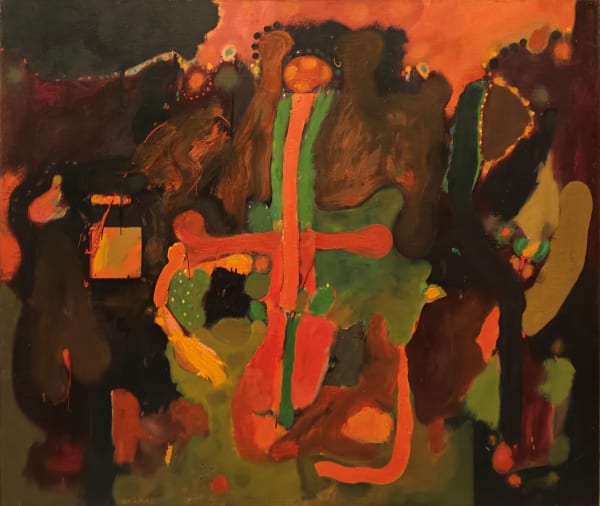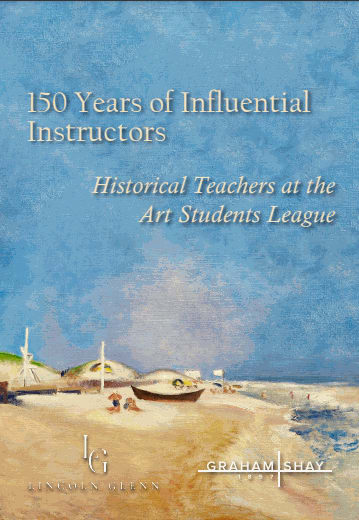A visionary painter with ties to the avant-garde artistic community in New York at midcentury, William Scharf nevertheless defies art historical categorization. His abstracted compositions of organic and geometric formal elements recall the free associations of Surrealism and the all-over grandeur of Abstract Expressionism, and at the same time embody a very individual and immediately recognizable pictorial sense. Scharf combines virtuoso paint handling, vibrant color, and rich symbolic language in canvases that engage the viewer in a transcendent and emotional dialogue. This dialogue is accomplished in part through recurring symbols, which allude to hidden, mysterious narratives. Scharf plumbs the psychological wells of collective myths for symbolic content: the crown of thorns, the ladder, the fish, and the cross can be found throughout, functioning not, as one might expect, as religious symbols, but rather as a means through which to access a deeper, symbolic level of visual communication.
Born in 1927 in Media, Pennsylvania, an early friendship with renowned artist N.C. Wyeth encouraged Scharf’s artistic efforts from a very young age. After a time with the Army Air Corps in the mid-1940s, Scharf formalized his art studies at the Pennsylvania Academy of the Fine Arts under Franklin Watkins, Daniel Garber, and Water Steumpfig, and later at the Barnes Foundation under Abraham Chanin. A scholarship in 1948 allowed the artist to study at the Académie de la Grand Chaumière in Paris for a time, and he also took this opportunity to travel in Italy, Belgium, and England. Upon his return to Philadelphia he again enrolled at the Pennsylvania Academy and became increasingly interested in Jazz music.
At Wyeth’s urging, Scharf moved to New York in 1952, where he has lived and worked until his death in 2018. He exhibited in group exhibitions throughout the 1950s, and received his first New York solo exhibition at the David Herbert Gallery in 1960. He exhibited consistently over the next several decades, most recently at MoMA PS1 in Queens, New York, the Frederick R. Weisman Museum of Art in Malibu, California, and the Phillips Collection in Washington, D.C.
Though Scharf maintained many art-world friendships, most notably a close relationship with Mark Rothko, whom he assisted with the preliminary studies for the de Menil Chapel in Houston, Scharf’s paintings function on a more personal, mystical level than those of many of his contemporaries. In works that range from diminutive paintings to wall-covering canvases, one finds that Scharf’s bold, evocative compositions offer glimpses into a unique artistic mind.






